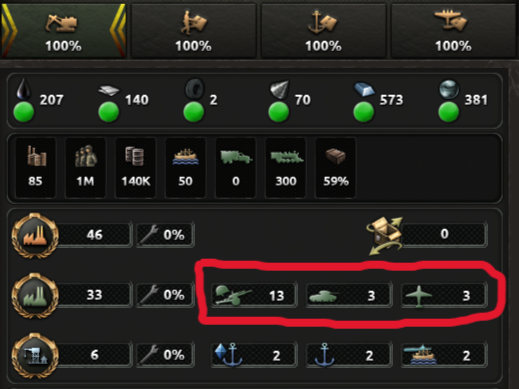I got interested in the effectiveness of bombing in World War II and found an interesting thing, a quote from a topic called ''Impact on German Industry'':
''Since the beginning of 1944, aircraft factories have become the main target of air raids. In February 1944, 50% of aircraft factories were attacked over several days, and many of them were almost completely destroyed. But each time it was possible to restore production or move factory equipment to another location.''
In the game, as we know, bombing directly affects the decrease in production efficiency, but it only starts from the last factory in the last production window, that is, they constantly affect some civilian trains, armored vehicles, and the like. The factories allocated for aviation are in the very top windows and have no vulnerability. Now I will show you the ideal possible potencial window that is already in the game and is ideal for prioritizing bombing factories for equipment. This window is taken from the intelligence data of the state and shows how many factories are used by different areas of the military industry.

Using something like this we could determine which factories to bomb and where exactly to disrupt the efficiency of production in aviation, tank construction or basic equipment.
''Since the beginning of 1944, aircraft factories have become the main target of air raids. In February 1944, 50% of aircraft factories were attacked over several days, and many of them were almost completely destroyed. But each time it was possible to restore production or move factory equipment to another location.''
In the game, as we know, bombing directly affects the decrease in production efficiency, but it only starts from the last factory in the last production window, that is, they constantly affect some civilian trains, armored vehicles, and the like. The factories allocated for aviation are in the very top windows and have no vulnerability. Now I will show you the ideal possible potencial window that is already in the game and is ideal for prioritizing bombing factories for equipment. This window is taken from the intelligence data of the state and shows how many factories are used by different areas of the military industry.

Using something like this we could determine which factories to bomb and where exactly to disrupt the efficiency of production in aviation, tank construction or basic equipment.
- 4
- 3


